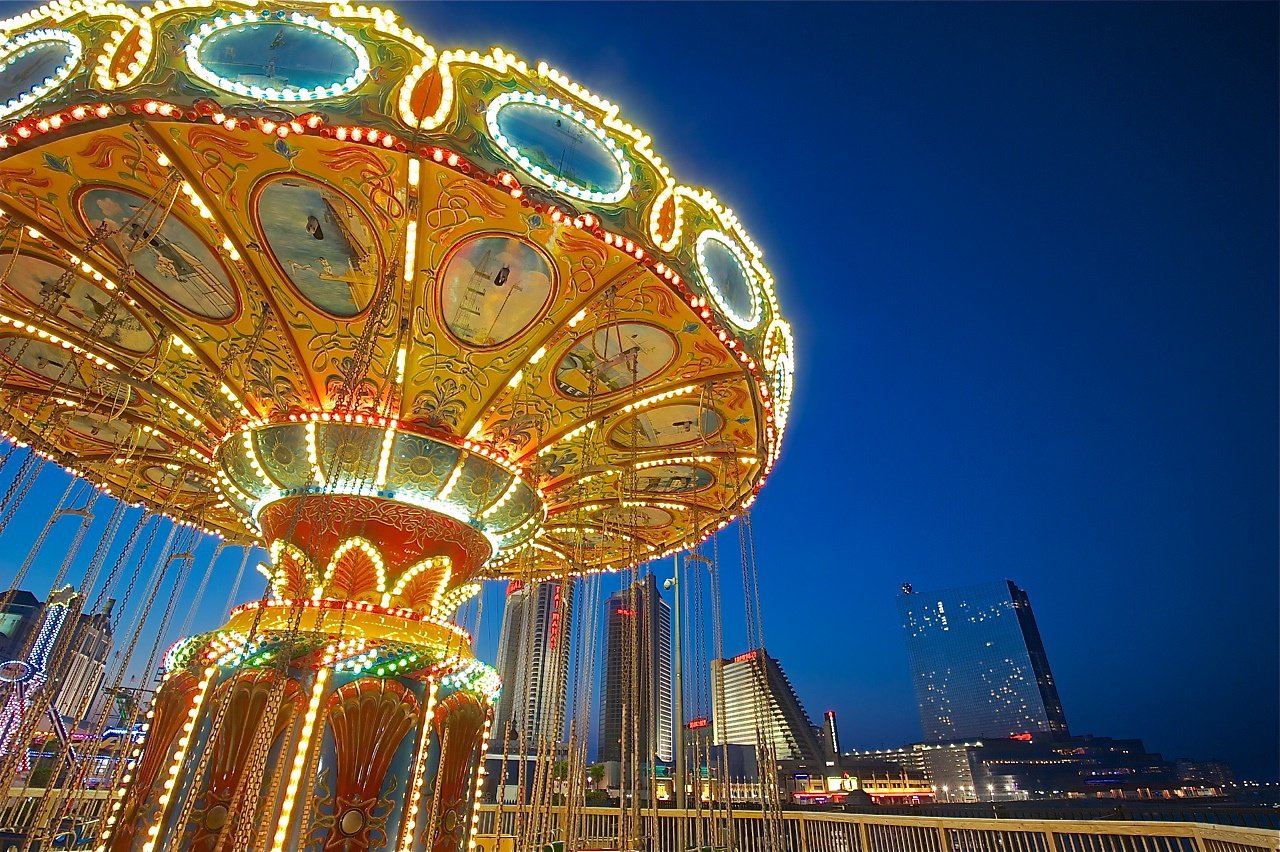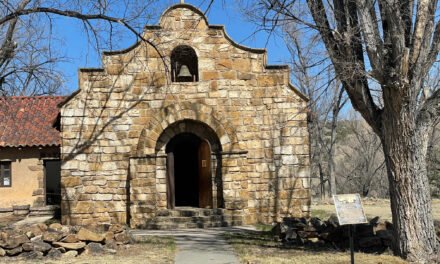
Take a stroll through Caminito, Buenos Aires’ famously colorful street museum

Yes, it’s touristy, and yes, it’s typically mobbed with people all trying to get their photos, but Caminito is worth seeing if you’re a first time visitor to Buenos Aires. Located in the neighborhood of La Boca, Caminito is the most famous pedestrian street in the city.
Caminito went through many metamorphoses to become the picturesque attraction that it is today. Its history dates back to the mid-19th century when Buenos Aires was growing rapidly due to international trade. La Boca became important because immigrants from Spain and Italy settled here and started to work at the nearby harbor on the Riachuelo River. This harbor was booming and the warehouses were buzzing with activity, processing Argentinian beef to ship around the world.

Artist at work, photo by Debbie Stone
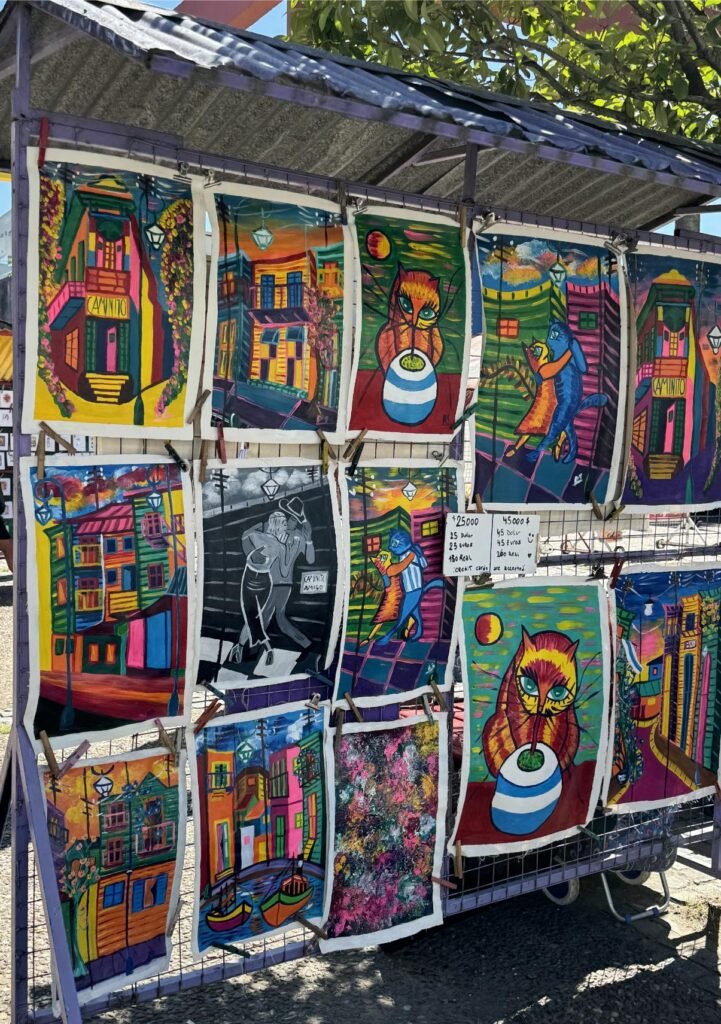
Art for sale, photo by Debbie Stone
Most of the immigrants were poor when they arrived in Buenos Aires. They collected pieces of wood and metal sidings, and other leftover ship construction materials to use for their homes. They made simple, communal dwellings or conventillos, covered in corrugated zinc and haphazardly built on raised foundations, due to frequent floods in the past. As to their vibrant hues, these came from the various unused paints that the dock workers used.
Thanks to the fusion of the different cultures of the immigrants, one of the most important musical and dance styles of the country emerged – the tango. They used it as a way to express the nostalgia and melancholy they felt being so far from their homelands.
Caminito was largely abandoned for a number of years after the railroad closed. It turned into a garbage dump known by locals as “The Curve.” The shape of this street was and still is a winding path, created by an old stream that once flowed down it, heading to the river.
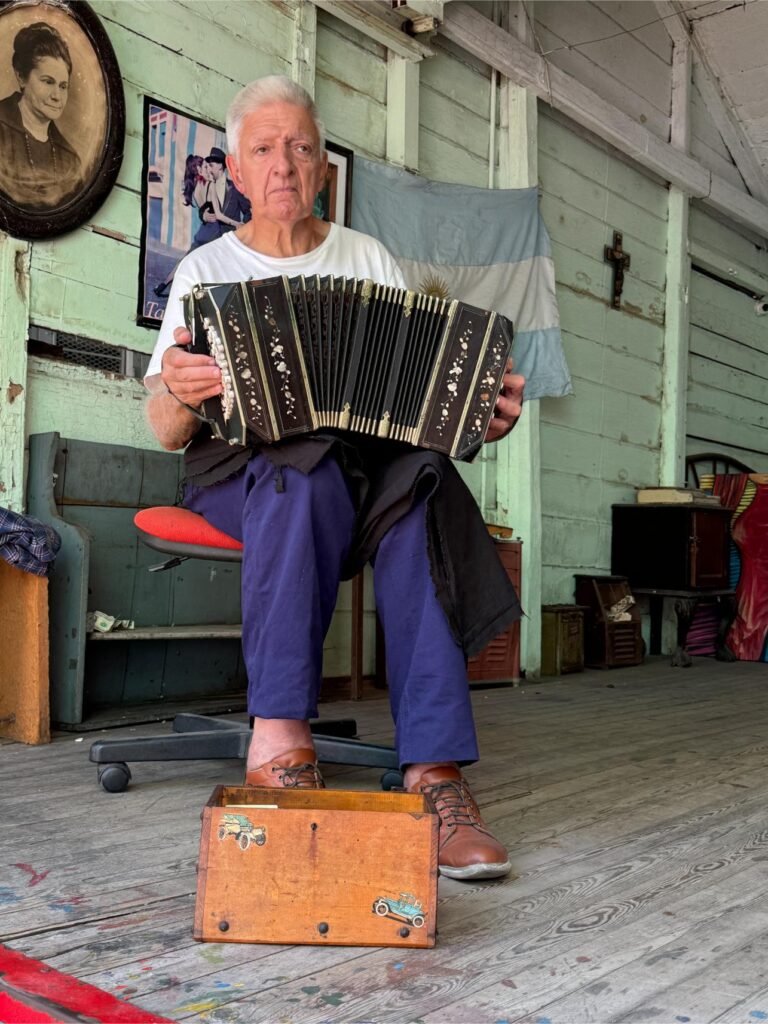
A musician entertains, photo by Debbie Stone
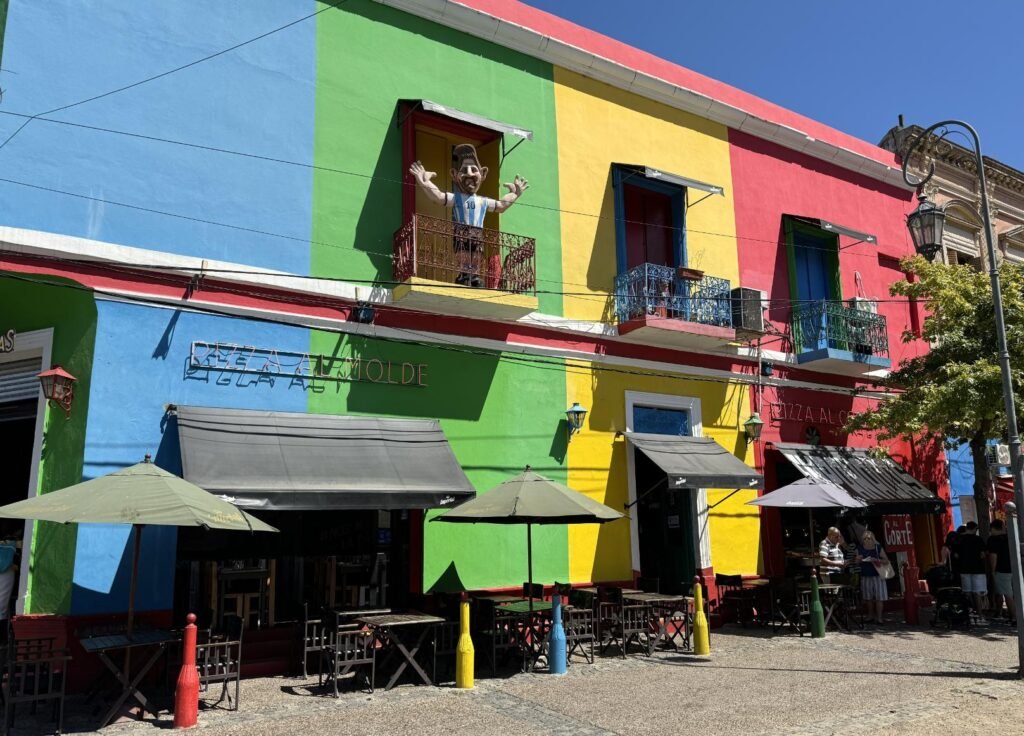
Brightly hued buildings attract photographers, photo by Debbie Stone

Figures, colorful buildings and more line the streets, photo by Debbie Stone
Flash forward to the 1950s when La Boca’s famous painter Benito Quinquela Martin got involved in breathing new life into the street. He was inspired by a 1926 tango song entitled “Caminito,” which means “little path” and tells of a love lost. Martin got the neighborhood involved and together they helped to create a pedestrian walkway and open-air museum, where artistic works, many donated by renowned artists, are exhibited. Murals with deep social meanings also dot the area.
The combination of the artwork and the vibrantly painted buildings and cobblestones gives this place its incredible colors and is a magnet for photographers, amateur and professional.
From some of the balconies of the buildings are figures of such well-known Argentinians as Juan and Eva Perón, Che Guevara and soccer legend Diego Maradona. They appear to be waving down at all their adoring fans and the paparazzi.
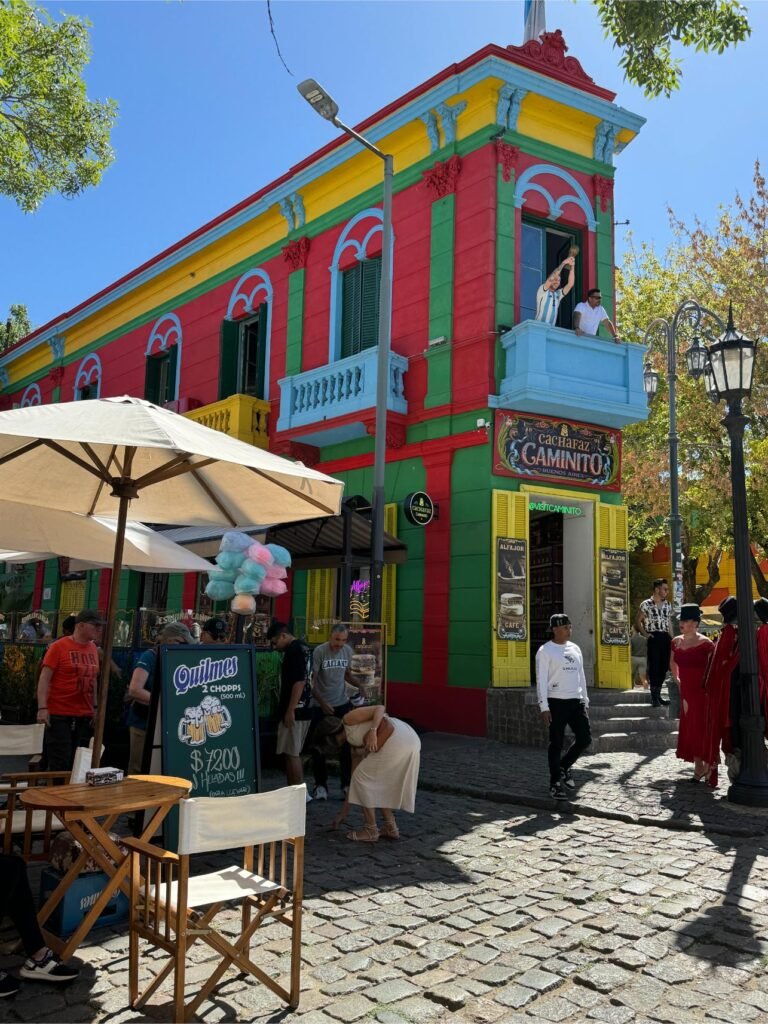
Soccer legend Diego Maradona appears to wave from the balcony, photo by Debbie Stone

Murals dot the walls, photo by Debbie Stone
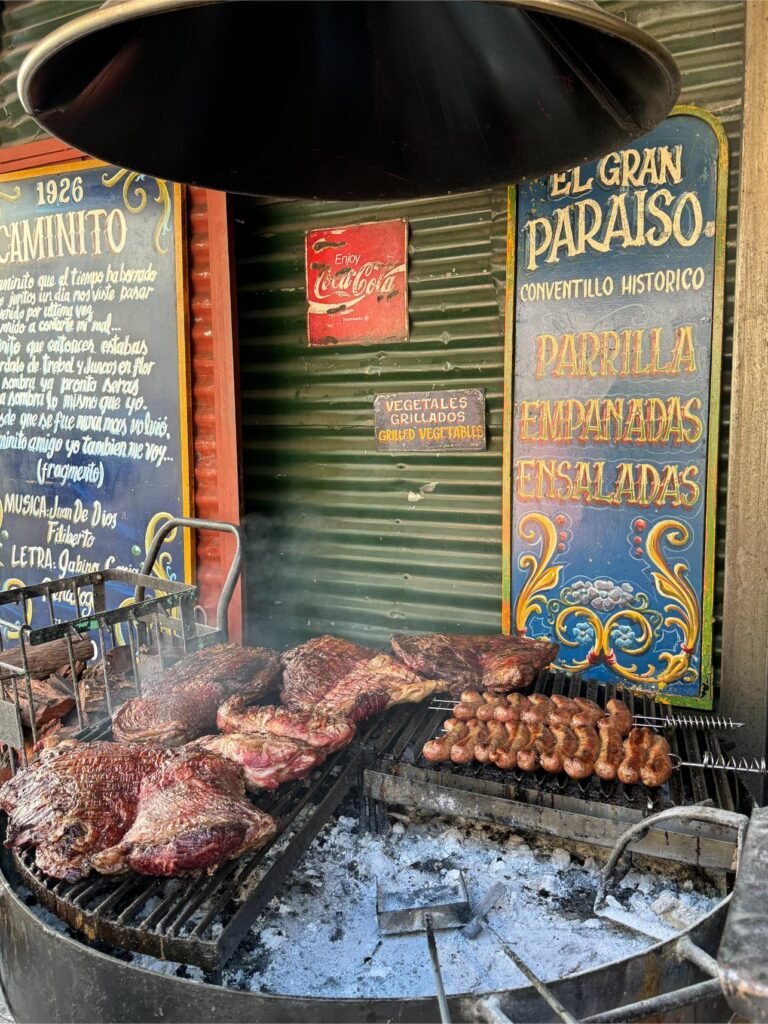
Meat reigns supreme in Buenos Aires, photo by Debbie Stone
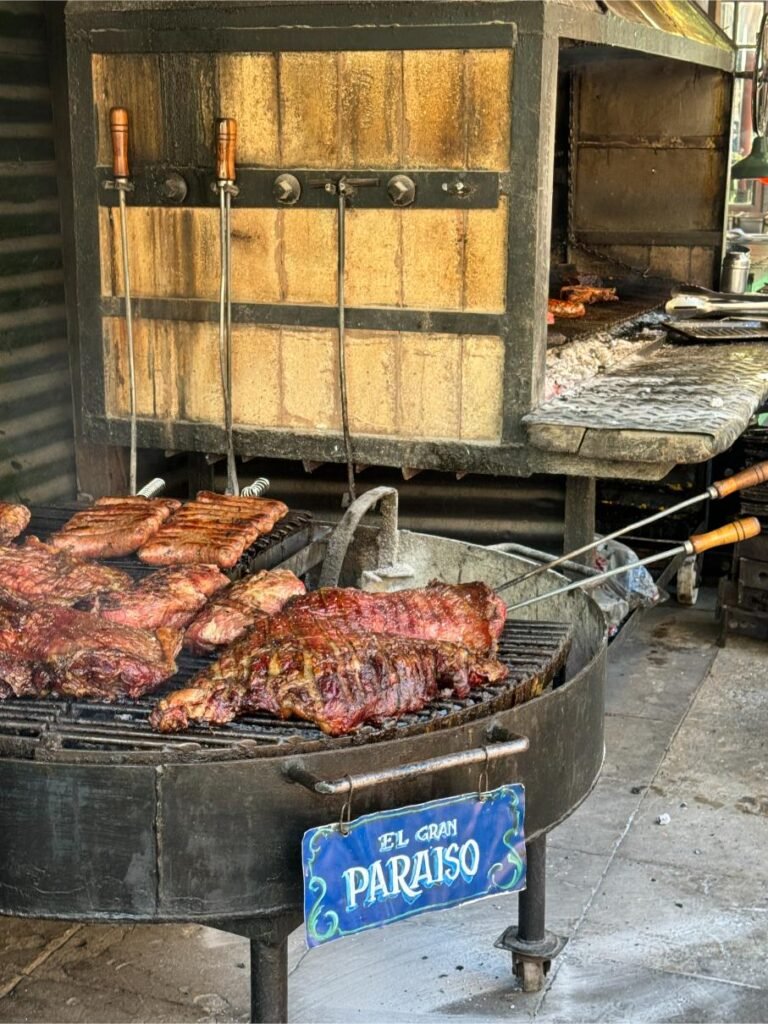
The aroma of grilled meat fills the air, photo by Debbie Stone
Costumed tango dancers take to the streets to strut their stuff. They’ll encourage you to pose with them using various props. Expect to pay them some pesos for pics. Just be prepared to say no to the hustle if you’re not interested.
You’ll also find plenty of restaurants and watering holes, along with overpriced souvenir shops and vendors selling art, jewelry and a plethora of trinkets. The streets are teeming with people, so moving through the area can be a bit of a slog. And all the stimulation can be overwhelming.
Step to the sides of the street, stop and just take it all in at your own pace. If it gets too crazy and you feel like you’re playing the human form of bumper car as you dodge and weave, head to a café for something to eat or drink. Typically, there’ll be a lull in the action, especially when all the tour bus passengers head back to their coaches.
Caminito is often called a tourist trap, but don’t let that put you off. Just know that visiting this area is best done during the daytime and don’t wander off onto the other streets, as it’s not safe.

Tango dancers will hustle you to pose for pesos, photo by Debbie Stone
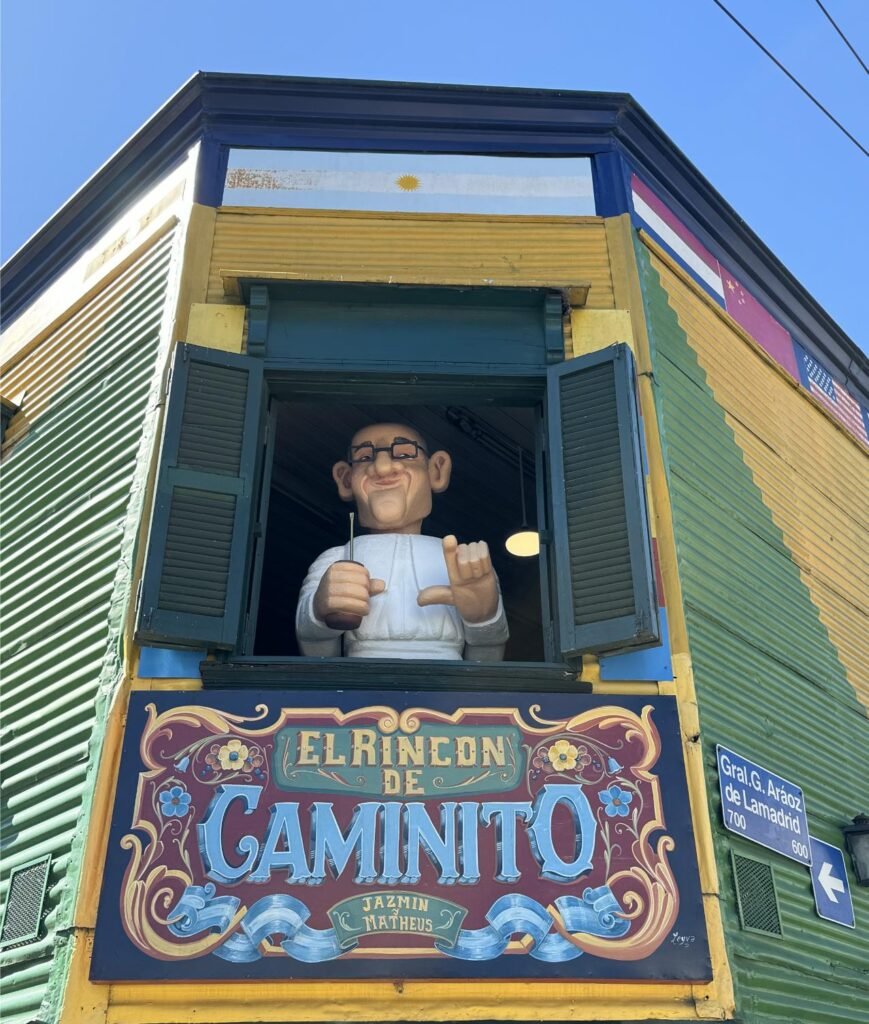
Welcome to Caminito, photo by Debbie Stone




![Wickedly Good Halloween Cocktails [COCKTAIL TIME]](https://luxebeatmag.com/wp-content/uploads/2024/10/Diplomatico-Rum-Blood-Moon-Negroni-150x150.jpg)






![National Martini Day: June 19 [COCKTAIL TIME]](https://luxebeatmag.com/wp-content/uploads/2024/06/reviv-single-gardeners-martini-440x264.jpg)
